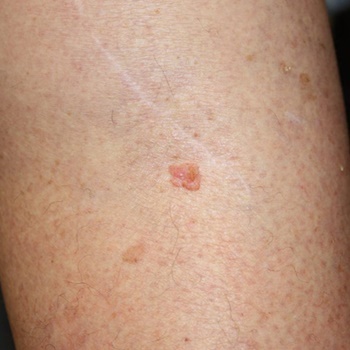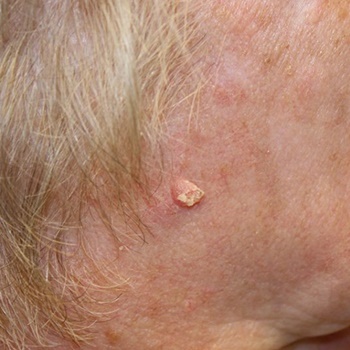
Squamous cell skin cancer is the second most common type of cancer worldwide, with about 1 million cases in the U.S. each year. Utah has the highest rate in the nation of this type of skin cancer, because of our high elevation, relative fair skin compared to most other states, and our outdoor lifestyle. Squamous cell carcinoma happens most often in people over 65, people with blond or red hair, light colored eyes, and fair skin, but can happen in anyone and at any age. More cases are diagnosed every year, and this type of skin cancer is more aggressive and can even be fatal, especially if it is bigger than 2 centimeters across (which is about 4/5 of an inch). If you think you have or know you have a squamous cell cancer, come to Bahr Dermatology in Bountiful to make sure you get the best care possible.
A squamous cell cancer will usually look like a pink or scaly firm bump on the skin, a sore that doesn’t heal, or a thick rough spot that doesn’t go away. It is most commonly found on the head and neck, arms, or upper chest or back. If not caught early, the carcinoma can grow aggressively and can invade muscle, bone, and cartilage, and can spread to other places in the body. When caught early, it is completely curable. Because of the aggressive nature of this type of skin cancer it is important to find and get it treated in the right way before it spreads.



Depending on the size, type, and location of the skin cancer, Dr. Bahr suggests the following treatments: